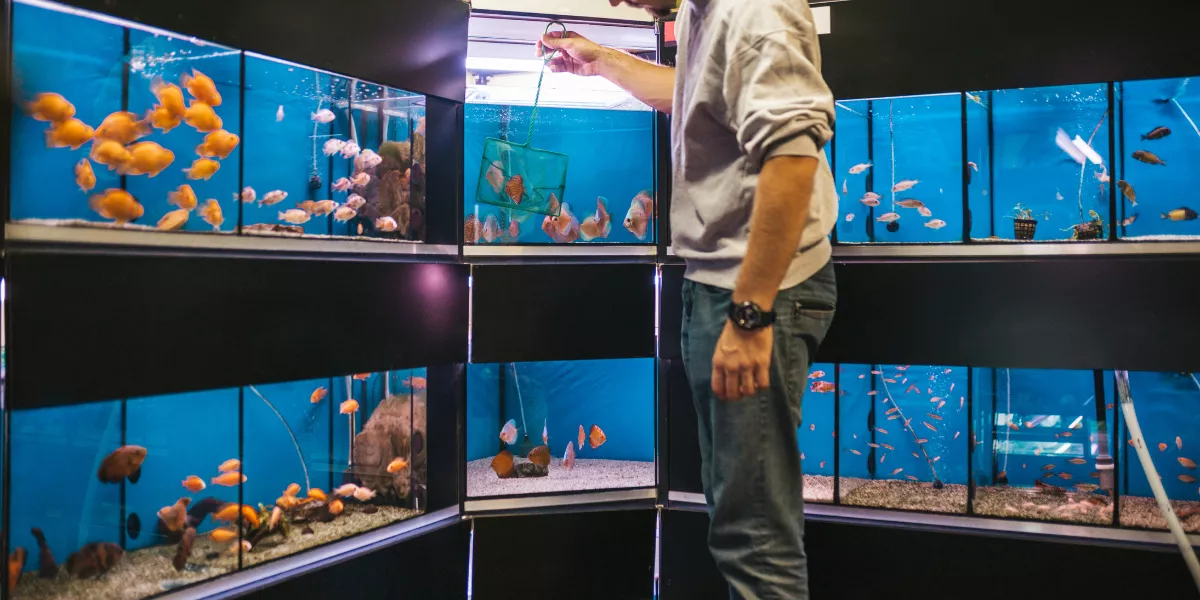
When setting up your aquarium filtration system, consider different types like sponge filters for small tanks, filter pads for dense particle-catching, and filter floss for tiny debris. For biological filtration, rely on beneficial bacteria with media like ceramic rings or live plants that absorb nutrients. Chemical filtration options like activated carbon or ion exchange resins can help with removing toxins. Assess your tank size, fish types, and waste production to choose the right system, whether it's a sponge filter for small tanks or a canister filter for larger ones. Remember, tailoring your filtration to your setup's needs is crucial for a healthy aquatic environment.
Types of Mechanical Filtration
When setting up your aquarium, choosing the right type of mechanical filtration can significantly impact the water quality for your aquatic pets. Mechanical filtration works by physically trapping debris and particles from the water, preventing them from circulating and clouding the tank. There are various types of mechanical filtration options available, such as sponge filters, filter pads, filter floss, and filter socks.
Sponge filters are a popular choice for small tanks and fry tanks. They work by drawing water through a porous sponge that traps debris. Filter pads are dense pads that catch particles as water passes through them. Filter floss is a fine, dense material that can trap even the smallest particles, providing effective filtration. Filter socks are fabric bags that capture larger debris before water enters the main filtration system.
Each type of mechanical filtration has its advantages and is suitable for different tank setups. Consider the size of your tank, the type of aquatic life you have, and the maintenance requirements when selecting the right mechanical filtration for your aquarium.
Biological Filtration Methods
To effectively maintain the water quality in your aquarium, utilizing biological filtration methods is crucial for the health and well-being of your aquatic inhabitants. Biological filtration relies on beneficial bacteria to break down harmful waste products like ammonia and nitrites produced by fish and decaying organic matter. One common method of biological filtration is through the use of biological filter media, such as ceramic rings or bio balls, where the bacteria colonize and thrive.
Another effective biological filtration method is the use of live plants in your aquarium. Plants absorb nutrients like nitrates, helping to keep the water clean and balanced. Additionally, adding a layer of substrate like gravel or sand can provide a surface area for beneficial bacteria to grow and flourish.
Chemical Filtration Options
For effective water purification in your aquarium, consider incorporating various chemical filtration options. Chemical filtration involves using specific media to remove impurities from the water that can't be eliminated through mechanical or biological filtration alone.
Activated carbon is a popular choice for chemical filtration as it effectively absorbs dissolved organic compounds, odors, and toxins, keeping your aquarium water clear and free from contaminants.
Another chemical filtration option is using ion exchange resins. These resins can help remove harmful substances like heavy metals from the water by exchanging ions with the resin, effectively trapping these unwanted elements. Additionally, phosphate removers can be used to reduce phosphate levels in the water, preventing algae overgrowth and maintaining a healthy aquatic environment for your fish and plants.
When selecting a chemical filtration option for your aquarium, consider the specific needs of your setup and the issues you're facing. By incorporating chemical filtration into your aquarium maintenance routine, you can ensure a cleaner and healthier environment for your aquatic inhabitants.
Choosing the Right Filtration System
Consider the specific requirements of your aquarium setup when selecting the right filtration system to ensure optimal water quality for your aquatic pets. Start by assessing the size of your tank, the types and numbers of fish you have, and the amount of waste they produce.
For smaller tanks with fewer fish, a simple sponge or hang-on-back filter may suffice. Larger tanks or those with more fish will benefit from a canister filter or a sump system that offers higher filtration capacity. If you have sensitive species or require crystal-clear water, a UV sterilizer can help maintain water clarity and eliminate harmful microorganisms.
Additionally, planted tanks might benefit from a system that promotes biological filtration to support plant growth. Remember to consider maintenance requirements and the ease of cleaning when choosing a filtration system to ensure that you can keep up with the necessary upkeep for a healthy aquatic environment.
Conclusion
In conclusion, when choosing a filtration system for your aquarium, consider the specific needs of your setup. Mechanical filtration helps remove debris, biological filtration supports beneficial bacteria growth, and chemical filtration can help remove impurities.
Depending on the size and inhabitants of your aquarium, a combination of these filtration methods may be best. Research and experimentation will help you find the perfect filtration system for your aquatic environment.




